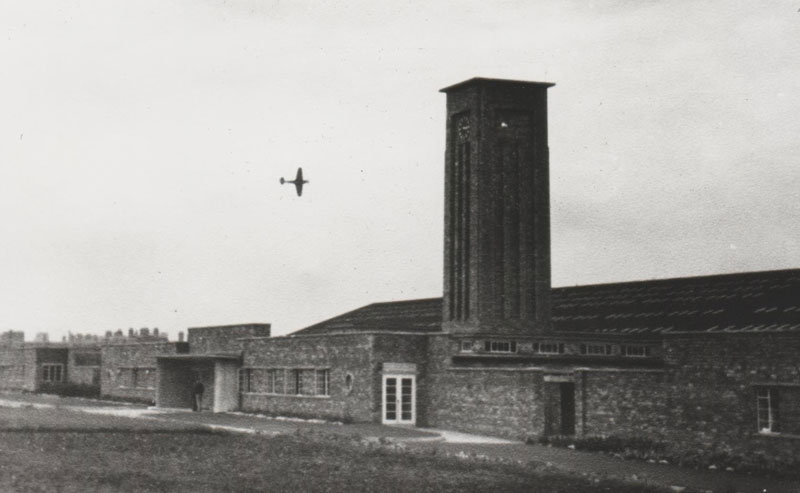The recent production of the final gyro gunsight at Leonardo's Crewe Toll site, marked a hugely significant milestone in the 75-year history of company’s presence in Edinburgh. But the story doesn’t end there, as the baton of electronics excellence is passed on for the benefit of Britain’s next generation combat aircraft.
While our engineers clearly relish the challenge of inventing the sensor technology of the future, they have just as much pride in the company’s heritage, dating back to June 1943 when the Edinburgh site was constructed to support the Royal Air Force.
Vital technology for WWII and beyond
 The RAF Spitfire urgently required a new facility to manufacture gyro gunsights, since the original production plant in Manchester was running out of capacity and contending with the constant threat of bombing. The gunsight was so crucial, that a secret memo at the end WW2 described it as "the single most important equipment" introduced during the war. Incredibly, the technology remains in-service today on board international naval vessels.
The RAF Spitfire urgently required a new facility to manufacture gyro gunsights, since the original production plant in Manchester was running out of capacity and contending with the constant threat of bombing. The gunsight was so crucial, that a secret memo at the end WW2 described it as "the single most important equipment" introduced during the war. Incredibly, the technology remains in-service today on board international naval vessels.
Production of this vital gunsight technology, which greatly enhanced the success of the Spitfire, acted as a springboard for the creation of a new generation of electronic systems, many of which had never been seen in the UK before. This included the creation of airborne radar, lasers and self-protection systems, cutting-edge versions of which are supplied today to customers around the globe, keeping almost 2,000 highly skilled employees busy at Leonardo’s Edinburgh site.
 The very first gyro gunsights were delivered on December 5, 1943, with 26 more completed by January 1, 1944, after which production steadily built to 1,000 units per month. The wartime output of gyro gunsights exceeded 9,500, with most equipping the guns of Lancaster, Spitfire and Hurricane aircraft. Company archives also show many women working in the production lines, forming the main workforce of the time. In 1944, the Daily Express reported on the RAF’s extraordinary success in the skies, saying that the gyro gunsight was "one of Britain’s great scientific achievements". Since then, more than 50,000 gyro gunsights have been supplied from Edinburgh to 25 countries for customers including the Indian Navy.
The very first gyro gunsights were delivered on December 5, 1943, with 26 more completed by January 1, 1944, after which production steadily built to 1,000 units per month. The wartime output of gyro gunsights exceeded 9,500, with most equipping the guns of Lancaster, Spitfire and Hurricane aircraft. Company archives also show many women working in the production lines, forming the main workforce of the time. In 1944, the Daily Express reported on the RAF’s extraordinary success in the skies, saying that the gyro gunsight was "one of Britain’s great scientific achievements". Since then, more than 50,000 gyro gunsights have been supplied from Edinburgh to 25 countries for customers including the Indian Navy.
Inspiring future aerospace engineering
 This heritage is now inspiring a new cohort of Leonardo aerospace engineers in Edinburgh to develop the next generation of sensors for the UK’s future ‘Tempest’ aircraft.
This heritage is now inspiring a new cohort of Leonardo aerospace engineers in Edinburgh to develop the next generation of sensors for the UK’s future ‘Tempest’ aircraft.
"Over the past 75 years, our employees’ innovation has played a central role in the development of some of the most exciting technology,” explains Alastair Morrison, Leonardo’s Deputy Managing Director UK and head of the Edinburgh site. “This ranges from the Spitfire’s gyro gunsights to the navigation system for the Arianne Space Rocket and the advanced radar for today’s Typhoon fighter jet. The intricate complexity of that technology is extraordinarily challenging, yet I believe it inspires our employees who thrive on overcoming problems and finding innovative ways forward."

